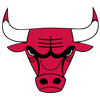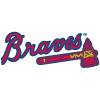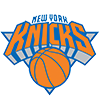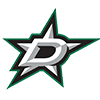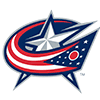DL Hall's storyline over the weekend almost had a bit of comedy to it.
The Orioles, despite trading away pieces at the deadline, remain shockingly in playoff contention, and they actually occupied the third and final Wild Card spot when they called up the exciting young lefty Saturday. It looked like he would become the latest addition to a surprisingly entertaining young squad, potentially helping lead them back to the playoffs well ahead of schedule.
Excellent stuff with shaky command was Hall's story according to both his scouting reports and his minor-league numbers, as he combined a 36.0 percent strikeout rate with a 13.9 percent walk rate for Triple-A Norfolk. That was his story in his MLB debut as well, as he struck out six batters in just 3.2 frames but also allowed five runs on five hits and three walks.
After the game, he was optioned to the minors, where he'll work as a reliever.
Sure, there's plenty of logic behind the move. Hall has plenty of relief risk to begin with and may be of more use to the Orioles down the stretch as a bullpen weapon than as a starter given his unfinished development, and he's already within 10 innings of his career high. The demotion and role change are hardly permanent. Still, it's not often that you see a player go from much-hyped prospect to minor-league reliever in the span of a few short hours. There was almost a slapstick, slipping-on-a-banana-peel quality to how quickly
DL Hall's storyline over the weekend almost had a bit of comedy to it.
The Orioles, despite trading away pieces at the deadline, remain shockingly in playoff contention, and they actually occupied the third and final Wild Card spot when they called up the exciting young lefty Saturday. It looked like he would become the latest addition to a surprisingly entertaining young squad, potentially helping lead them back to the playoffs well ahead of schedule.
Excellent stuff with shaky command was Hall's story according to both his scouting reports and his minor-league numbers, as he combined a 36.0 percent strikeout rate with a 13.9 percent walk rate for Triple-A Norfolk. That was his story in his MLB debut as well, as he struck out six batters in just 3.2 frames but also allowed five runs on five hits and three walks.
After the game, he was optioned to the minors, where he'll work as a reliever.
Sure, there's plenty of logic behind the move. Hall has plenty of relief risk to begin with and may be of more use to the Orioles down the stretch as a bullpen weapon than as a starter given his unfinished development, and he's already within 10 innings of his career high. The demotion and role change are hardly permanent. Still, it's not often that you see a player go from much-hyped prospect to minor-league reliever in the span of a few short hours. There was almost a slapstick, slipping-on-a-banana-peel quality to how quickly it all went down.
I'm not sure what overarching lesson to take from Hall's eventful Saturday, other than that baseball players' careers can take strange twists and turns. I could get preachy here and start talking about how none of us can take anything for granted, but that's clearly overdoing it. Instead, I'll merely note that baseball provides its fair share of humor at times alongside the usual helpings over joy, despair and everything in between.
The players listed below are full of compelling story lines as well. We've got the star whose bet on himself is turning out better than anyone could have guessed. We've got players who have overcome injury and adversity. And, unfortunately, we have the best example of a tragic hero baseball has seen in some time, a young star who just can't seem to get out of his own way and let his prodigious talent shine. Move aside, Hamlet. Who needs Shakespeare when you have story arcs like these?
RISERS
 Aaron Judge, OF, Yankees: On July 13, Judge led the league with 30 homers, putting him on pace for 55. How can a player rise when he starts from such a high height? By hitting at a 96-homer pace since then, of course. In his last 26 games, Judge has cleared the fence 16 times while slashing .376/.521/.946, good for a ridiculous 299 wRC+. His 46 homers on the season put him on pace for 65, a number that would set the American League record comfortably while tying him for the fourth-most all-time. Judge has always hit the ball extremely hard, carrying an 18.8 percent barrel rate into this season, but that figure has jumped up to 26.6 this year and 33.8 percent over the aforementioned recent stretch. Crucially, however, he's also maintained his contact gains from last season, as his 25.4 percent strikeout rate nearly matches last year's career low of 25.0 percent, giving him more chances to hit the ball out of the park but also making his career-high .300 batting average easier to believe in.
Aaron Judge, OF, Yankees: On July 13, Judge led the league with 30 homers, putting him on pace for 55. How can a player rise when he starts from such a high height? By hitting at a 96-homer pace since then, of course. In his last 26 games, Judge has cleared the fence 16 times while slashing .376/.521/.946, good for a ridiculous 299 wRC+. His 46 homers on the season put him on pace for 65, a number that would set the American League record comfortably while tying him for the fourth-most all-time. Judge has always hit the ball extremely hard, carrying an 18.8 percent barrel rate into this season, but that figure has jumped up to 26.6 this year and 33.8 percent over the aforementioned recent stretch. Crucially, however, he's also maintained his contact gains from last season, as his 25.4 percent strikeout rate nearly matches last year's career low of 25.0 percent, giving him more chances to hit the ball out of the park but also making his career-high .300 batting average easier to believe in.
 Eloy Jimenez, OF, White Sox: I was a bit worried about Jimenez earlier this season, and I'm sure I'm not the only one. He's had a few too many injuries over the last two seasons, and his 30.0 percent strikeout rate and .216/.275/.378 slash line in his first 10 games back from a hamstring injury in early July suggested that he may not be fully healthy. Since then, however, he's more than lived up to expectations. In his last 20 games, he's cut his strikeout rate to 18.1 percent while slashing .385/.410/.577. A .433 BABIP suggests that he's been overachieving, and he won't continue to hit quite that well, but his 17.2 percent barrel rate over that stretch indicates that he's making excellent contact. That figure would rank fifth in the league if he maintained it all season. Jimenez's health issues do add risk down the stretch, but if he keeps hitting the ball this hard and this often, he'll be one of the game's best hitters as long as he stays on the field.
Eloy Jimenez, OF, White Sox: I was a bit worried about Jimenez earlier this season, and I'm sure I'm not the only one. He's had a few too many injuries over the last two seasons, and his 30.0 percent strikeout rate and .216/.275/.378 slash line in his first 10 games back from a hamstring injury in early July suggested that he may not be fully healthy. Since then, however, he's more than lived up to expectations. In his last 20 games, he's cut his strikeout rate to 18.1 percent while slashing .385/.410/.577. A .433 BABIP suggests that he's been overachieving, and he won't continue to hit quite that well, but his 17.2 percent barrel rate over that stretch indicates that he's making excellent contact. That figure would rank fifth in the league if he maintained it all season. Jimenez's health issues do add risk down the stretch, but if he keeps hitting the ball this hard and this often, he'll be one of the game's best hitters as long as he stays on the field.
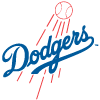 Dustin May, SP, Dodgers: I don't normally write about players who aren't yet in the majors, but May's imminent return from Tommy John surgery deserves an exception. He's scheduled to return Friday against the Marlins and should be able to remain in the rotation down the stretch. May's 2.98 ERA in his first two seasons in the league wasn't backed up by his underlying numbers, but he started to show something else in five starts before injuring his elbow last year, striking out an incredible 37.6 percent of batters, nearly double the 20.8 percent mark he carried into the year. If his numbers in his six rehab outings are any indication, he'll be that same guy down the stretch, as he owns a 41.9 percent strikeout rate and 1.71 ERA on his rehab assignment and just struck out 10 batters in five innings in his final tune-up. He'll likely be on a pitch count initially, but he probably won't be all that restricted, as he reached 68 pitches in his Sunday start.
Dustin May, SP, Dodgers: I don't normally write about players who aren't yet in the majors, but May's imminent return from Tommy John surgery deserves an exception. He's scheduled to return Friday against the Marlins and should be able to remain in the rotation down the stretch. May's 2.98 ERA in his first two seasons in the league wasn't backed up by his underlying numbers, but he started to show something else in five starts before injuring his elbow last year, striking out an incredible 37.6 percent of batters, nearly double the 20.8 percent mark he carried into the year. If his numbers in his six rehab outings are any indication, he'll be that same guy down the stretch, as he owns a 41.9 percent strikeout rate and 1.71 ERA on his rehab assignment and just struck out 10 batters in five innings in his final tune-up. He'll likely be on a pitch count initially, but he probably won't be all that restricted, as he reached 68 pitches in his Sunday start.
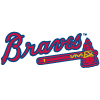 Vaughn Grissom, 2B, Atlanta: In a world where many organizations try to squeeze every drop of team control out of their young players, Atlanta's approach provides a breath of fresh air. After Michael Harris' promotion straight from Double-A proved a big success, the team tried the same move with Grissom, and the early returns have been excellent. In his first five big-league games, the 21-year-old has hit .389/.450/.778 with a pair of homers and a steal. It would be unwise to read too much into five games (especially five games in which he has a .455 BABIP), but that doesn't mean we shouldn't get at least somewhat excited. Exactly who will become as he matures is hard to say, but his 12.2 percent strikeout rate in the minors this year suggests he should hit for a solid average, and his 27 steals suggest that should come with speed as well. How much of the power he's shown early is real remains to be seen, but there's enough here to suggest that Grissom could make his case to continue earning at-bats even once Ozzie Albies (foot) returns.
Vaughn Grissom, 2B, Atlanta: In a world where many organizations try to squeeze every drop of team control out of their young players, Atlanta's approach provides a breath of fresh air. After Michael Harris' promotion straight from Double-A proved a big success, the team tried the same move with Grissom, and the early returns have been excellent. In his first five big-league games, the 21-year-old has hit .389/.450/.778 with a pair of homers and a steal. It would be unwise to read too much into five games (especially five games in which he has a .455 BABIP), but that doesn't mean we shouldn't get at least somewhat excited. Exactly who will become as he matures is hard to say, but his 12.2 percent strikeout rate in the minors this year suggests he should hit for a solid average, and his 27 steals suggest that should come with speed as well. How much of the power he's shown early is real remains to be seen, but there's enough here to suggest that Grissom could make his case to continue earning at-bats even once Ozzie Albies (foot) returns.
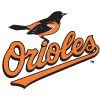 Jorge Mateo, SS/OF, Orioles: I included Mateo as a faller early in the season on the theory that his poor offense would mean he'd begin to lose starting opportunities and therefore lose his ability to rack up steals, the main way he's provided value to fantasy teams. That seems to have been premature. While his bat did indeed struggle for much of the year, he's remained the Orioles' unquestioned starting shortstop, getting the nod in 100 of the team's first 114 games. He's also shown significant improvement at the plate recently. Over his last 100 plate appearance, a span that stretches back to July 10, he's slashed .337/.370/.642 with five homers and six steals. One key has been cutting his strikeout rate to 19.0 percent, far below the 32.3 percent mark he carried up to that point. He's also increased his hard-hit rate to a respectable 38.2 percent, well above the 27.6 percent mark he posted through July 9. Those improvements make Mateo more than just a speed guy, but they also make his steals more secure.
Jorge Mateo, SS/OF, Orioles: I included Mateo as a faller early in the season on the theory that his poor offense would mean he'd begin to lose starting opportunities and therefore lose his ability to rack up steals, the main way he's provided value to fantasy teams. That seems to have been premature. While his bat did indeed struggle for much of the year, he's remained the Orioles' unquestioned starting shortstop, getting the nod in 100 of the team's first 114 games. He's also shown significant improvement at the plate recently. Over his last 100 plate appearance, a span that stretches back to July 10, he's slashed .337/.370/.642 with five homers and six steals. One key has been cutting his strikeout rate to 19.0 percent, far below the 32.3 percent mark he carried up to that point. He's also increased his hard-hit rate to a respectable 38.2 percent, well above the 27.6 percent mark he posted through July 9. Those improvements make Mateo more than just a speed guy, but they also make his steals more secure.
 Ha-Seong Kim, 2B/3B/SS, Padres: Kim's time as the Padres' primary shortstop looked like it was about to end, but now that Fernando Tatis won't be playing a game this season, Kim can suddenly look forward to being a starter for the rest of the year. That's not great news for the Padres, but it's great for anyone with Kim on their fantasy team. It could be even worse for the Padres if not for the fact that Kim has taken a big step forward in his second MLB season. Specifically, he's cut his strikeout rate from 23.8 percent to 18.5 percent, helping his batting average rise from .202 to .249. He's still not hitting the ball with much authority, as he has a 29.7 percent hard-hit rate (which sits in the ninth percentile) and just six homers, but he has at least managed a respectable eight steals. It's still not a particularly compelling profile, but Kim should be useful the rest of the way in deeper formats now that his job is secure.
Ha-Seong Kim, 2B/3B/SS, Padres: Kim's time as the Padres' primary shortstop looked like it was about to end, but now that Fernando Tatis won't be playing a game this season, Kim can suddenly look forward to being a starter for the rest of the year. That's not great news for the Padres, but it's great for anyone with Kim on their fantasy team. It could be even worse for the Padres if not for the fact that Kim has taken a big step forward in his second MLB season. Specifically, he's cut his strikeout rate from 23.8 percent to 18.5 percent, helping his batting average rise from .202 to .249. He's still not hitting the ball with much authority, as he has a 29.7 percent hard-hit rate (which sits in the ninth percentile) and just six homers, but he has at least managed a respectable eight steals. It's still not a particularly compelling profile, but Kim should be useful the rest of the way in deeper formats now that his job is secure.
FALLERS
 Fernando Tatis, SS, Padres: Tatis finally looked to be on the verge of returning from a broken wrist, an injury that initially appeared as though it might only keep him out until early June, when the news got worse. He'd been hit with an 80-game suspension after testing positive for the steroid Clostebol, a ban that will cost him not only the remainder of the regular season but also the postseason and about a month of next year as well. His teammates and organization were understandably quite disappointed, with general manager A.J. Preller giving a particularly damning quote:
Fernando Tatis, SS, Padres: Tatis finally looked to be on the verge of returning from a broken wrist, an injury that initially appeared as though it might only keep him out until early June, when the news got worse. He'd been hit with an 80-game suspension after testing positive for the steroid Clostebol, a ban that will cost him not only the remainder of the regular season but also the postseason and about a month of next year as well. His teammates and organization were understandably quite disappointed, with general manager A.J. Preller giving a particularly damning quote:
Preller: "I think we're hoping that from the offseason to now, that there would be some maturity. And obviously with the news today, it's more of a pattern and something we've got to dig a little bit more into. (1/2)
— Dennis Lin (@dennistlin) August 13, 2022
Tatis is obviously a drop in single-season formats, but he'll remain quite interesting for next year even as he's guaranteed to miss time. It's hard to be confident he'll remain on the field once he returns, but we're still talking about a player who hit .292 with 41 homers and 27 steals per 600 plate appearances through his age 22 season.
 Clay Holmes, RP, Yankees: For much of the year, Holmes was arguably the story of the season. Despite carrying a career 4.81 ERA into the year, he didn't allow a single run between his second and 30th appearances of the year, meaning he owned a 0.28 ERA as late into the year as June 19. That performance allowed him to step into the closer role following Aroldis Chapman's struggles, but things have gone south for him in a big way over the last two months. He allowed his second run of the year on June 20 and has struggled to a 6.35 ERA since that date. Control has been a particular problem, as he's walked 15.3 percent of opposing batters over that stretch, though he's also seen his strikeout rate drop from 28.2 percent before June 20 to just 21.2 percent since. Things have gotten particularly ugly over his last five outings, a stretch in which he's allowed seven runs in four innings. It would hardly be a surprise if he's removed from the ninth inning going forward.
Clay Holmes, RP, Yankees: For much of the year, Holmes was arguably the story of the season. Despite carrying a career 4.81 ERA into the year, he didn't allow a single run between his second and 30th appearances of the year, meaning he owned a 0.28 ERA as late into the year as June 19. That performance allowed him to step into the closer role following Aroldis Chapman's struggles, but things have gone south for him in a big way over the last two months. He allowed his second run of the year on June 20 and has struggled to a 6.35 ERA since that date. Control has been a particular problem, as he's walked 15.3 percent of opposing batters over that stretch, though he's also seen his strikeout rate drop from 28.2 percent before June 20 to just 21.2 percent since. Things have gotten particularly ugly over his last five outings, a stretch in which he's allowed seven runs in four innings. It would hardly be a surprise if he's removed from the ninth inning going forward.
Ken Giles, RP, Free Agent: I couldn't get behind drafting Giles at his NFBC average draft position of 386 due to fears that the Mariners would never abandon their committee setup, but I can see the logic behind the decision for those who grabbed him. While there were other promising arms in the Seattle bullpen, none were nearly as proven as Giles and his 115 career saves. As it turns out, all Giles has provided for drafters is 4.1 scoreless innings, and it may be a bit before he throws his next big-league frame. His recovery from Tommy John surgery was first interrupted by a finger tendon issue, and he'd only returned for five appearances before suffering a shoulder injury. He's been rehabbing since the start of August, but the Mariners elected to release him rather than activate him. It's possible he'll earn another job quickly and work his way into a high-leverage role, but we're talking about a 31-year-old who's thrown eight innings across the last three seasons, so it's best to be cautious.
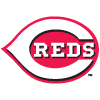 Hunter Strickland, RP, Reds: While the Reds haven't named a dedicated closer this season, Strickland had become the de facto ninth-inning man, leading the team with a modest seven saves. That's probably the number he'll end the year on, however, as he was officially removed from the role early last week following a stretch in which he allowed seven runs in five appearances while blowing a pair of saves. Nothing about his statline suggests he belongs anywhere near the ninth inning. His 5.70 ERA on the year is awful, and it's well-deserved according to his 5.60 FIP, as he's struck out just 18.1 percent of opposing batters while walking 13.2 percent. The 33-year-old righty looks more like a minor-leaguer than a major-league high-leverage arm at this point. Alexis Diaz, younger brother of Mets closer Edwin, looks like the Reds reliever to grab, as he has the team' most recent save, and owns a 1.83 ERA and 33.3 percent strikeout rate on the year.
Hunter Strickland, RP, Reds: While the Reds haven't named a dedicated closer this season, Strickland had become the de facto ninth-inning man, leading the team with a modest seven saves. That's probably the number he'll end the year on, however, as he was officially removed from the role early last week following a stretch in which he allowed seven runs in five appearances while blowing a pair of saves. Nothing about his statline suggests he belongs anywhere near the ninth inning. His 5.70 ERA on the year is awful, and it's well-deserved according to his 5.60 FIP, as he's struck out just 18.1 percent of opposing batters while walking 13.2 percent. The 33-year-old righty looks more like a minor-leaguer than a major-league high-leverage arm at this point. Alexis Diaz, younger brother of Mets closer Edwin, looks like the Reds reliever to grab, as he has the team' most recent save, and owns a 1.83 ERA and 33.3 percent strikeout rate on the year.











